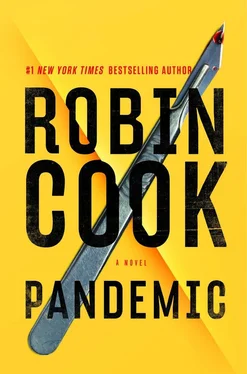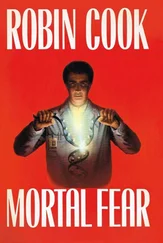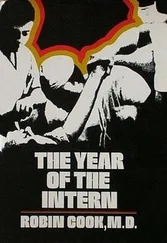As the train entered Manhattan, Carol began to relax a degree. There was still the sense of weakness, but it hadn’t worsened, and although she got several more chills, they were nothing like the first. They were just enough to let her know she had probably developed a slight fever. When the train stopped at Canal Street, she thought about getting off but was afraid to try to stand up. If she were to fall, it would be much too embarrassing. She felt the same at Prince Street, and then things went downhill. She began to experience difficulty getting her breath, which worsened quickly. By Union Square station, where there was to be a mass exit and mass boarding, she was beginning to feel desperate. She needed air, but her legs seemed not to want to respond.
As the train’s doors opened, her phone slipped from her grasp and fell to the floor. In the blink of an eye it was snapped up by a scruffy sort who had been eyeing Carol’s behavior. The second he had the phone he melted into the people departing the packed car. Carol tried to call out that she needed help, but no words emerged as she attempted to breathe. A bit of froth appeared at the corners of her mouth. Pulling her legs under her, she marshaled her remaining strength and tried to stand, but as soon as she pushed off the seat, she collapsed, falling against the legs of the people standing immediately adjacent to the bench seat she had been sitting on. People tried to move to give her more room, but there was no place to go. One person tried to arrest her fall but couldn’t, as Carol was like a dead weight. Mercifully, she lost consciousness as she slumped like a rag doll, partially propped up against the legs of fellow riders.
As quickly as her phone had disappeared, it was now time for her Gucci backpack to follow suit. Several of the other passengers tried to grab the offending individual, who also departed before the doors closed, but their attention was quickly redirected at Carol, who was twitching uncontrollably and turning blue. It was obvious to everyone that she was desperately ill and struggling for air. Nine-one-one was dialed on multiple phones. As the train lurched forward, another knowledgeable passenger notified the conductor. She came pushing through the crowd as she communicated the bad news to the engineer. As the conductor reached Carol, the intercom sprang to life to announce that a sick passenger was on the train and the train would be stopping at the upcoming 23rd Street station for an indeterminate amount of time. There were a few audible groans. It was a problem that happened far too often on the NYC subway system, inconveniencing thousands upon thousands of passengers who were not sick.
The gravity of Carol’s condition was immediately apparent to the conductor, who was confused as to what she should do. With almost no first-aid training other than CPR, which didn’t seem to be indicated, since Carol had a pulse and was breathing, she felt helpless. It was quickly apparent to everyone present that there was no good Samaritan with medical training available. Meanwhile, up in the first car, the engineer alerted the rail control center to the emergency and was assured an EMT team was being dispatched to the station.
Once the train was at 23rd Street, it took more than twenty minutes for masked EMT workers to arrive. Many riders had departed the train by then, seeking other transportation, and so the paramedics had a relatively clear path to Carol. What they found was a livid patient with an undetectable heart rate and blood pressure who was barely breathing, if at all, and had lost control of her bladder. After putting a mask on the patient and attaching her to an oxygen source, they quickly lifted her onto a gurney. They then whisked her off the train, up to the street, and into the waiting ambulance.
With the siren blaring, they rapidly weaved their way across town to pull up to the ER unloading dock at Bellevue Hospital. As they unloaded her from the ambulance, a triage nurse corroborated that there was no heartbeat. One of the EMTs leaped up onto the gurney as the others rapidly propelled it into the depths of the Emergency Department and ultimately into one of the trauma rooms, calling out a cardiac arrest in the process. This unleashed a resuscitation team poised for such an emergency, which included a medical resident, a nurse practitioner, and a resident in anesthesia. With the history of breathing difficulty obtained from fellow subway passengers, the patient was intubated and given positive pressure. The assisted respiration required a shocking amount of pressure, suggesting the lungs were possibly consolidated, meaning ventilation was impossible.
With no heartbeat and no ventilation, Carol was declared dead on arrival at 10:23 and covered with a sheet. The only trouble was that no one knew her name was Carol. When the ER clerk called the NYC Medical Examiner’s Office, she gave the deceased the temporary moniker of Jane Doe, explaining that there was no identification and the patient was unaccompanied. At that point, Carol’s gurney was unceremoniously parked in a corner to await the medical examiner’s van. Under the white sheet, she was still dressed in her finery, and the endotracheal tube still protruded from her mouth.
LATER THAT MORNING...
MONDAY, NOVEMBER 5, 10:30 A.M.
By 10:30 in the morning all eight autopsy tables at New York City’s Office of the Chief Medical Examiner, known colloquially as the OCME, were in use, as the team tried to catch up with demand. Over the weekend there had been a backup of ten bodies that had not been considered forensic emergencies and had been left for Monday morning. Besides those ten, six new cases had come in between late Sunday afternoon and early that morning. Table #1, the table farthest from the stainless-steel sinks, had seen the most action. This was the table favored by Dr. Jack Stapleton. Since he was almost always the first doctor in the “pit” in the morning, he got to choose his station, and he always told Vinnie Ammendola, the mortuary tech with whom he usually teamed, to nab it. Situated at the periphery, it was a little bit separate from the main commotion in the autopsy room when all the tables were in use. At that time Jack was already starting his third case. Most of the other tables were still on their first.
“So!” Jack said, straightening up. He had just carefully shaved away the blood-soaked, matted hair from the right side of the victim’s head. He had been very careful not to distort the wound he wished to expose. What was now obvious was a completely circular dark-red-to-black lesion an inch or two above the woman’s right ear, surrounded by a narrow circular abrasion. The patient was on her back, with her head rotated to the left and propped up on a wooden block. She was naked and so pale she could have been mistaken for a wax-museum model.
“Is the entrance wound round or oval?” Jack liked a didactic style and frequently used it even when other people weren’t listening, as often happened when he was working with Vinnie. Vinnie had a habit of zoning out on occasion. But this morning Jack had an attentive audience. Lieutenant Detective Lou Soldano, an old friend of Jack and Jack’s wife, Laurie, had shown up. Over the years Lou had come to truly appreciate the enormous benefits forensic pathology could provide to law enforcement, particularly when it came to homicide investigation, which was his specialty. Whenever there was a case that Lou thought could be helped by forensics, he made it a point to observe the autopsy. Although there hadn’t been any such cases for a number of months, that morning there had been three.
“I’d say circular,” Lou said. Lou was standing across from Jack on the patient’s left side. Also on that side was Vinnie. Next to Jack was a second mortuary tech, Carlos Sanchez, who had been newly hired by the OCME and was now at the very beginning of his orientation and training. As one of the more experienced techs, Vinnie generally broke in newbies by having them work closely with him. Jack was accustomed to the routine and usually didn’t mind, provided it didn’t slow him down too much. Jack was one of those people who didn’t like to waste time and had little patience for incompetence. So far, he wasn’t all that impressed with Carlos. It wasn’t anything specific, more an attitude thing, as if the man wasn’t all that interested.
Читать дальше












